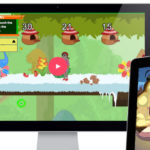 The modern education landscape is filled with instruction methodology buzzwords (individualized, differentiated, personalized, etc.). Each seeks to explain how to best develop instruction that is engaging and adapted for individual differences.
The modern education landscape is filled with instruction methodology buzzwords (individualized, differentiated, personalized, etc.). Each seeks to explain how to best develop instruction that is engaging and adapted for individual differences.
Though these terms may often be used interchangeably, they truly refer to different concepts within the classroom.
Today, we wanted to take a quick look at two of the most often confused concepts: “personalized learning” and “differentiated instruction“. Read below the break to learn about the distinction between the two and what the relationship between the two terms means for your classroom and curriculum.
Differentiated Instruction
Differentiated Instruction refers to instruction that is adapted to the learning styles and preferences of a variety of students. The learning goal remains the same for all students but the method of instruction varies. Differentiation can include learning content, a set process, or modalities (based on a student needs).
The basis of differentiating instruction methods lies in the core belief that students learn best when they are able to deeply connect with the lesson and curriculum.The idea is to closely align the activities, assessments, and tasks with student’s learning styles, interests, and abilities.
- i.e. If Jane learns best via visual resources, then you should make an effort to meet his/her learning needs by providing visually-stimulating instruction resources.
Personalized Learning
Personalized Learning refers to instruction that is designed for, and paced to, specific student-to-student learning needs, while also taking into account the student’s learning preferences and interests. A fully personalized learning environment allows students to progress through individual learning objectives at their own pace and preferred learning methods.
A personalized learning environment is often highly student-driven and requires a high-level of communication between student and teacher. The informed prescription of a student’s “next step” is important in personalized learning and requires you and your student to devise a plan that is specifically tailored to his or her individual learning needs and goals.
- i.e Maybe Johnny learns best in an individual setting via visual and auditory resources, but he often becomes disinterested during full-class instruction. A personalized learning experience for Johnny may involve allowing him to progress at his own pace, possibly off to the side via an interactive online resource found on an iPad or tablet.
Where Differentiated Instruction and Personalized Learning “collide”
A simple way to describe the difference is to explain that differentiated instruction is teacher-centered and relies on the teacher to provide the support, instruction, and assessments. Personalized learning demands that learners drive their own learning and help make decisions regarding the method, content, pace, and objectives.
- To further drive home that point, differentiated instruction is centered on the same learning objectives for all students but alters the way students learn. Via personalized learning, students will likely have very different objectives and will direct their learning to meet individual learning.
It’s imporant to note that the value points of “differentiated instruction” and “personalized learning” are not necessarily mutually exclusive. In fact, differentiating lessons and instruction methods for individual students is a key function of personalized learning.
You, the educator, defines the distinction between differentiated and personalized within your daily classroom, and there is a good chance that the line may be blurred a bit. However, by understanding the value and execution of each instruction ideal, you can ensure that you are reaching your most important goal: meeting the learning needs of each and every student.

0 Comments